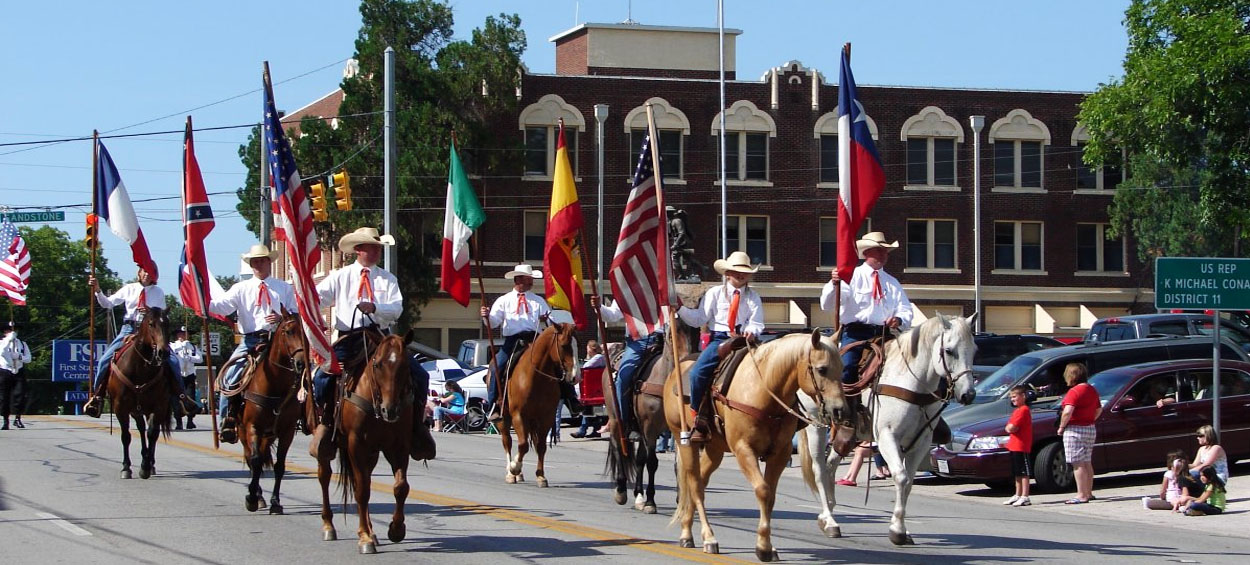Tonkawa Indians, one of the first known inhabitants of the area of Central Texas, hunted and lived along the streams. They were peaceful, and encouraged the Spaniards to establish missions that would help defend them against the warlike Comanches. The Comanches came into the area in the eighteenth century and eventually claimed territory as far to the Southeast as San Antonio. Conflicts between whites and Comanches during the Republic of Texas era was marked by such battles as a fight at Enchanted Rock in 1841.
The first white settlers in the area were Germans who established the town of New Braunfels (now in Comal County) in 1845, and Fredericksburg (now in Gillespie County) in 1846. In 1847 John O. Meusebach, the leader of the German settlers, signed a treaty with the Comanches to permit Germans to live in the area of the Fisher-Miller Land Grant, which included what is now Llano County. After Meusebach’s treaty, five settlements were established on or near the Llano River in what later became the western part of the county, but the town of Castell was the only one of these to survive. The Germans soon began to move into the eastern part of the county, Settling at Tow Valley and Bluffton on the Colorado River in 1852. A saltworks between the two places operated until after the Civil War, and there was also a sawmill in that area. Several farms were established, and by 1853 settlement had begun in the northwestern part of the county. Whistleville and Bugscuffle, joined to form Valley Spring. A German Methodist church and school was established in Castell in 1856 by Dietrich J. G. Rodeqv.
Llano County was organized in 1856 from the Bexar District and Gillespie County. Also, 250 acres were donated for a site for the county seat. In 1858 the population was over 1,000, and cattle, hides, and pecans were being exported. Agriculture was the chief occupation in the northern portion and ranching in the south. Germans were predominate in the western parts and Anglo-Americans in the other areas. By 1860 there were 59,744 acres of farmland. The census that year reported 21,344 cattle and 1,492 sheep in Llano County, and the corn harvest exceeded 23,500 bushels. The United States census found 1,101 people living in the county including 21 slaveholders and 54 slaves.
Though cattle ranching remains the single most important element of Llano County’s agricultural economy, the county is also one of the ten leading producers of hogs in Texas.
Communities in the county include Llano, the county seat, Kingsland, Horseshoe Bay in Llano County, partly in Burnet County), and Sunrise Beach. The three dams provide more than fifty-five miles of lakes on Llano County’s eastern border. These provide recreation and popular spots for retirement. Llano County has for years been a major hunting area, the “Deer Capital of Texas.” It leads the state in the number of white-tail deer harvested annually, with more than 12,000 killed each year. Wild turkeys are also hunted in the county. Other tourist attractions include the Bluebonnet Trail and Enchanted Rock State Natural Area. The Highland Lakes Bluebonnet Trail, an April event, is sponsored by towns in the area and includes chili cookoffs, festivals, and art shows, many in Llano County.
Llano County Affiliates
Castell, Texas | Highland Lakes, Texas | Horseshoe Bay, Texas






























